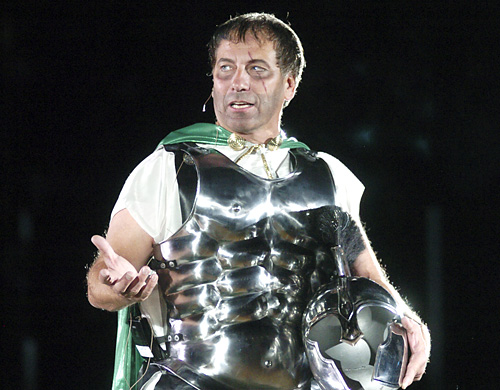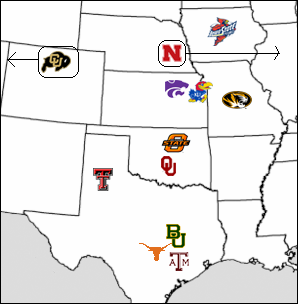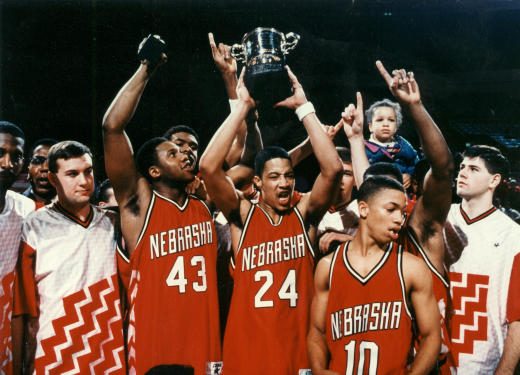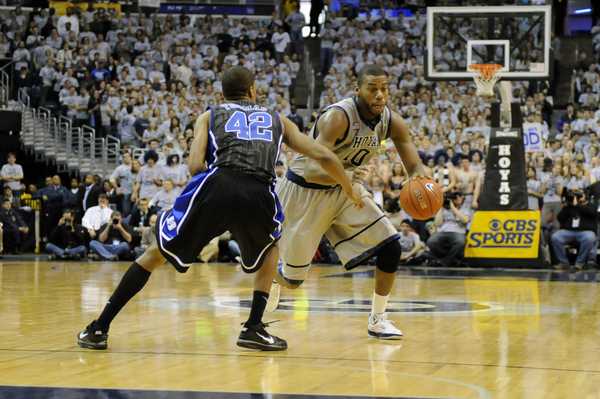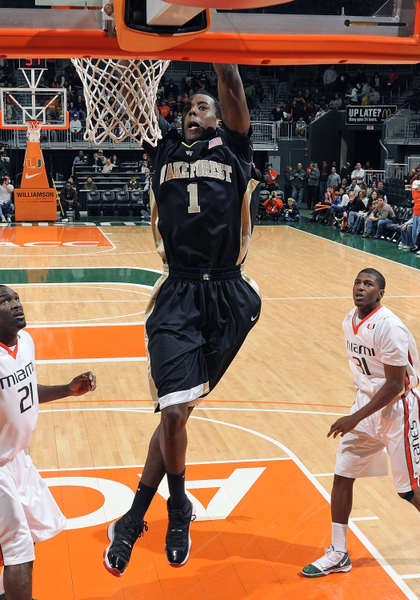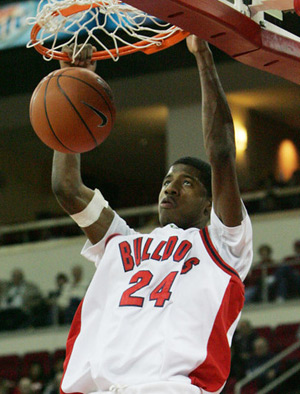Posted by rtmsf on June 14th, 2010
Andrew Murawa is the RTC correspondent for the Pac-10 and the Mountain West conferences and an occasional contributor.
The Big 12 went all the way to the brink, peered over the other side into non-existence, and then veered away from the white light at the last minute. The patient is now resting comfortably in Austin, although it has lost a little weight.
After last week’s rumors that the University of Texas was all but signed up to head to the Pac-10, bringing Oklahoma, Oklahoma State, Texas Tech, and potentially Texas A&M or Kansas along for the ride, Big 12 commissioner Dan Beebe pulled off perhaps the biggest longshot in the college sports year, reportedly in conjunction with an influential group of concerned citizens both within and outside of the world of college athletics, pulling Texas back from the brink with promises of SEC-type money and an ability for the Longhorns to start their own television network, the revenues of which they’ll be able to keep all for themselves. And, just as a little bonus, the remaining ten Big 12 schools (yes, it appears that for the near future, the Big 12 will have ten schools and the Big Ten twelve) will get to split the nearly $20 million in buyout penalties that Colorado and Nebraska must pay for leaving the conference. Maybe Christian Laettner’s shot and Doug Flutie’s pass were more exciting to watch, but Beebe’s last chance attempt at holding the Big 12 together will have a much larger long-term impact on the college sports landscape.

The Most Powerful Athletic Program in College Sports
Texas
The biggest winner here is Texas, on several fronts. According to Beebe’s projections, the Big 12’s next television deal coupled with projected income from a Longhorn television network could provide the university with between $20-$25 million annually, a marked increase from the estimated $10-$11 million they are currently generating. And, the Longhorns get to remain in a conference with its historic rivals, many of whom were either in the position a few days ago of doing whatever Texas decided it was going to do, or being left behind if Texas did leave. While the Big 12 was already painted as Texas and the 11 dwarfs before the last week, that image has been cemented in everyone’s minds now. Clearly that will be just another useful recruiting tool for Texas athletics.
Texas A&M
The Aggies come across as the only school in the Big 12 whose leaders were able to think of themselves in a way other than their relationship to Texas. If Texas had made the decision to head west, A&M was already well on its way to paving its own road to the SEC. Whereas before this mess, most would have pointed at Oklahoma or maybe Nebraska as the strong number two program to the Longhorn Ace, Texas A&M went a long way this week toward establishing their own identity. And then, of course, at the last minute the Aggies blinked. Fortunately for them, big daddy Texas still had their backs.
The Little Twelve
So what happens to the conference as a whole? It gets significantly richer, while being in the excellent position of dividing up a bigger pie up into fewer pieces. Beebe’s number should certainly be retired, and any time that he shows up at a Big 12 sporting event for the rest of his lifetime, they should roll out the red carpet for him, sit him down at a nice courtside throne and pay off a few cheerleaders to fan him with feathers and feed him grapes. Iowa State in particular was certainly on the verge of relegation to a mid-major program with Baylor likely not far behind. Missouri’s administrators, who not long ago talked of their involvement in the Big 12 in the past tense, have been saved as well from peddling their wares on the street corner. Kansas and its pre-eminent basketball program has been spared the indignity of either playing out of region in the Big East or asking for shelter from the Mountain West. And all these longtime rivals (or at least most of them) get to continue beating each other up on the playing field. Without a doubt, the 2010-11 season has just taken on some added significance.
Beyond all that, there are the details. First, is this league still the Big 12? We’ve put up with the Big Eleven still calling themselves the Big Ten if only because they were sorta old and quaint, perhaps a little senile, and who could blame them if they couldn’t count anymore. Sure the Atlantic 10 has 14 members, but the Atlantic 14 sounds like a really bad sequel to Ocean’s Eleven. But we really can’t have the Big 12 operating with ten members (assuming they actually stay at ten – more on that in a second), still calling itself the Big 12, can we? The easy solution is to just have the Big Ten and Big 12 swap logos, but something tells me we’re stuck with these names.
Read the rest of this entry »
| rtc analysis
| Tagged: air force, baylor, big 12, big ten, boise st, byu, colorado, dan beebe, fresno st, iowa st, kansas, memphis, missouri, mountain west, nevada, pac-10, sec, texas, texas a&m, utah, utah st
Share this story





























